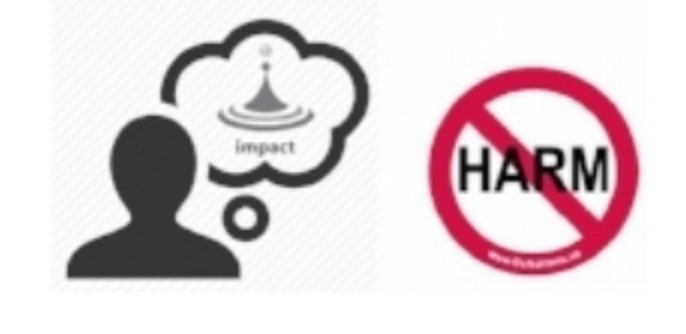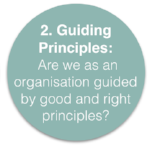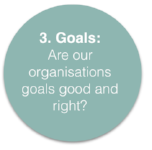Ethical short-term missions involves far more than just organising the logistics of a trip.
It is important to recognise that implementing ethical STM is complex and therefore requires careful consideration and planning.
This section of the website will help guide your organisation as you practically outwork the considerations and concepts discussed in the previous ethical framework section. If you haven't already, we suggest you read first before continuing.
The information in this section is designed for both sending and receiving organisations. This may include but is not limited to churches sending teams, local community organisations receiving teams or for organisations who handle both.
7 key steps
There are 7 key steps involved in outworking an effective STM program (see diagram below). For each step you'll find practical information, links to resources and sample tools provided to equip you as you outwork your STM program.
Developing your STM program Strategy:
Before you get stuck into the logistics involved in organising a given trip, it is important to ask yourself some foundational questions such as:
- Why does your organisation send or receive teams?
- What principles are guiding your STM program?
- What outcomes are you hoping to achieve by sending or receiving teams?
- How are you going to achieve this goal?
“‘Desire without knowledge is not good, and whoever makes haste with his feet misses his way’. ”
Carefully considering these questions will allow you to clarify your approach to STM and set a strong foundation for your program. This will in turn guide you as you make future decisions during the planning stages of STM trips. It is difficult to outwork ethical STM without strong foundations and even harder when these foundations are flawed and can lead to unintentional harm.
1. evaluate and clearly articulate your organisations motivations for sending or receiving teams
To Do:
- Brainstorm and list the motivations within your organisation for sending or receiving teams. Remember that different people within your organisation may have differing motivations.
- Consider the motivations of other actors involved in your STM program and identify if there are any conflicts or competing interests.This may require discussions with other actors.
- Discuss and determine which motivations are or should be primary within the context of your organisation's missions program.
- Evaluate ways you can work with members of your organisation or partner organisations to help them reprioritise motivations ensuring the local community is at the centre.
Remember
Organisation centric motivations like providing a positive experience for your church members, or raising more support for your organisation, are all important but we need to keep them as secondary motivations. Our primary concern motivations must always be putting the best interest of the local communities and families we engage with first. When we don’t we risk unintentionally causing harm to the very people we seek to assist.
2. Determine & evaluate your STM program's guiding principles
It is important to reflect and determine what principles are guiding your organisations STM program. Clear guiding principles act as a reference and compass to guide your decisions and actions. They should include:
- Biblical principles
- Human Rights principles
- Sector specific best practice principles
For example:
Our organisation will seek to uphold the biblical principles of selflessness, love, justice, equality and wisdom throughout our STM program We commit to:
- Put the needs of the local communities first over our organisations and team members desires and motivations (James 1:27)
- Love not only in word but in deed and truth including ensuring I always aim to avoid causing harm (Romans 13:10; 1 John 3;18)
- Uphold the rights of others especially those who are powerless and voiceless based on our belief that all people have equal worth. We will especially commit to safeguarding and upholding the rights of children.
- Act and advocate to call to account systems which perpetuate injustice and poverty (Isaiah 1:17).
- Seek knowledge, learning and understanding. to ensure our actions refelct evidence-based good practice (Proverbs 4:7)
When working with children we will:
- Always work to support children's duty bearers (parents, teachers and caregivers)
- Be guided by child rights and child protection principles.
When working with local churches we will:
- Be informed by sound missiology principles
- Be aware of the risks of importing our culture along with the gospel message and undermining indigenous expressions of Christianity.
3. evaluate the goals your organisation seeks to achieve by sending/receiving team
When it comes to setting ethical goals, getting the right perspective is of key importance.
To do:
- First find out and consider everyone's goals.
- Evaluate where there could be competing interests or where there is potential for privilege and power to be unintentionally exerted.
- Put the perspective of the local community in the centre and reorient or modify the goals of all other actors to support that goal.
The result should be an ethical end goal that all actors work towards in the STM trip. With this determined, you're well positioned to select a good method that will best achieve the ethical goal identified.
4. identify the type of trip & activities will you facilitate
The next step is determining what types of trips will best achieve the goal of your STM program.
Types of trips include:
- Action orientated trips
- Skills based volunteers and exchanges
- Asset Based Community Development Trips
- Learning Orientated trip
- Exposure Trips
- Advocacy Trips
See '4. Ethical Method' sections for more information and practical examples.
Boundaries
It is also important that as an organisation you establish healthy boundaries regarding activities you won't permit teams to get involved in. Boundaries provide clarity, protect the best interests of local communities as well as enable you to exercise duty of care over your teams.
Examples of healthy boundaries include:
- STM teams will not be permitted to volunteering in or visit orphanages or shelters (More info);
- STM members will not be permitted to participate in 'raids and rescues' for trafficked children
- STM members will not be permitted to engage in any activities that require specialised training or qualifications that they do not possess.
- STM members will not be permitted to engage in humanitarian work in conflict zones
5. Ensure adequate guidelines are in place
It is also important that you ensure that you have the correct policies in place which cover STM and volunteering placements. This should include at a minimum:
- Child Protection Policy; and
- Communications guidelines..
Child Protection Policy (CPP)
We often presume everyone has the same understanding of what constitutes appropriate behaviour and actions towards children, which sometimes is not the case – especially when there is a lack of clear guidelines and when people are placed in cross cultural environments.
Effective child protection policies and codes of conduct are vital to minimise risks to children by:
- providing clear behavioral guidance; and
- outlining child protection and safeguarding commitments, responsibilities and reporting procedures.
A CPP also serves to protect your organisation and staff; by demonstrating your commitment to child protection and safeguarding and creating clear boundaries, which minimises the risk of potential misunderstandings or incidents that may lead to allegations of child abuse.
A child protection policy should include:
- Introductory Information:
- A Statement of Commitment
- Policy Purpose
- Guiding Principles
- Scope
- Definitions
- Recruitment and Screening Practices
- Use of Images and Information
- Reporting Requirements and Processes
- Other Sections
- Education and Training
- Risk Management
- Child Participation
- Reviewing Policy
Communications Guidelines:
Sharing our STM experiences with family, friends over social media, through images and videos can be really powerful. It can be a core part of advocacy and awareness awareness efforts that encourage support for international missions, development and relief.
However if done incorrectly, the things we post and the stories we tell can cause harm by perpetuating negative stereotypes and violating the rights and dignity of the people we are portraying.
It's important that guidelines are in place so that team members and volunteers are equipped to know how share and post about their trip in an ethical and effective way.
Guidelines should include sections dealing with:
- Portraying of Local People We must be highly conscious of how we portray people both in the language and images we use. People should always be presented in a dignified manner, highlighting their agency and avoiding presenting people as helpless and in need of being ‘rescued’.
- Truthfulness: Issues, communities and people need to be presented truthfully and we need to ensure we avoid exaggerating facts or sensationalising issues while also avoiding oversimplifying issues, their causes and solutions and the diversity of communities.
- ·Portraying of Children: Children’s situations often evoke particularly strong responses, however we must be careful not to exploit this and instead put the child’s best interests and safety first. Children should never be presented in a vulnerable or submissive manner. They should always be adequately clothed and private or sensitive information should not be made publicly available.
- Portrayal of Sensitive Issues: Guidelines should be in place to boundaries around how teams portray sensitive issues such as trafficking, domestic violence, vulnerable children, families in crisis. Sharing intimate details of someone's experience of exploitation and trauma can cause a survivor to experience feelings of shame or reinforce a negative identity. Extra caution should be exercised with sharing these stories over the internet, as once up they are very difficult to pull down and the dissemination is not easily controlled.
- Consent for Stories and Images: As a part of showing respect for the people and communities we engage with, we should always seek permission from individuals before taking, posting or distributing people's images or stories. Communication guidelines should clarify where informed written or verbal consent is required including consent around taking photos of children.
- Managing levels of risk: Be aware that individuals or groups may be put at risk of stigma, reprisal, violence or rejection in their communities as a result of exposing their identity or story. A person’s safety, privacy and reputation should always be put first. Guidance around what information and images can and cannot be used should be in place to minimise risk.











